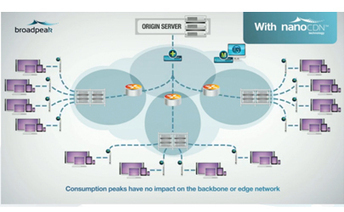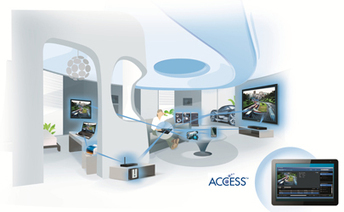Live streaming every phase of every sporting event of the Olympics is a big task. This year NBC expanded their targeted devices to include iOS, Android and Windows smartphones, PCs, Macs, and tablets. The combination of the increased number of live feeds and the increased number of targeted devices creates a complex live video workflow requiring coordination between a number of technologies and partners.
Research and publish the best content.
Get Started for FREE
Sign up with Facebook Sign up with X
I don't have a Facebook or a X account
Already have an account: Login
Monitoring innovations in post-production, head-end, streaming, OTT, second-screen, UHDTV, multiscreen strategies & tools
Curated by
Nicolas Weil
 Your new post is loading... Your new post is loading...
 Your new post is loading... Your new post is loading...
|

Nicolas Weil's comment,
September 25, 2012 10:45 AM
Jacques Le Mancq (CEO) m'a confirmé aujourd'hui qu'il n'y a aucune technologie P2P utilisée dans la version actuelle, c'est bien du multicasting. Je pense que l'avantage principal de cette solution par rapport à du caching traditionnel de flux live est qu'elle nécessite beaucoup moins d'investissement en hardware/management (les X niveaux de caches à setuper et à gérer/scaler) puisque mettant à contribution les gateways. Inversement c'est aussi un désavantage puisqu'il faut upgrader les gateways, ce qui peut être long et laborieux, surtout si plusieurs générations de en sont déployées. Mais le client nanoCDN étant royaltee-free, le jeu de transformer la GW en relai CDN en vaut certainement la chandelle d'un point de vue économique...

Nicolas Weil's comment,
September 25, 2012 11:55 PM
Infos complémentaires sur le transparent caching (http://goo.gl/fvRzr) dans les commentaires : le prix des équipements est élevé (il est souvent plus économique d'acheter plus de peering vers L3), et surtout un argument de choc dans le dernier commentaire... "This (transparent caching) doesn't address the last mile which is the real bottleneck for cable, DSL, and wireless (all flavors including satellite) customers."
|








![Broadpeak Optimizes Live OTT Video Delivery With Revolutionary nanoCDN Technology [PR] | Video Breakthroughs | Scoop.it](https://img.scoop.it/W0kbhecc-BIEWNlZDC1YPTl72eJkfbmt4t8yenImKBVvK0kTmF0xjctABnaLJIm9)





Amazing infographic for Sochi live video workflow